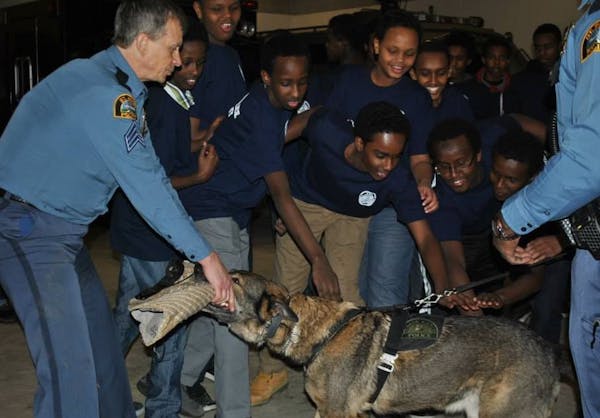It was supposed to be a moment just about the kids, but a graduation ceremony for the East African Junior Police Academy last weekend took on new significance when the St. Paul police chief introduced Kadra Mohamed, 21, the first woman of Somali descent to serve in the department.
Another first came in the form of Mohamed's wardrobe. Along with her new badge and uniform, she also wore a hijab, a head covering worn by some Muslim women when out in public.
Mohamed, who is working as a community liaison officer, told the group of students who graduated Saturday from the junior academy that she, like them, has ties to Somali and American culture.
"There's a way to work that together," she said.
St. Paul is believed to be one of the first police departments in the country to allow hijabs, according to officials. Last December, police in Edmonton, Alberta, also approved a policy. The St. Paul police mimicked the police service's hijab, which was designed to be able to unfasten easily in the event it is grabbed by an attacker.
"This decision will enable more Muslim women to consider serving their community through a career in law enforcement," said Lori Saroya, executive director of the Minnesota chapter of the Council on American-Islamic Relations, in a statement.
Officials with the St. Paul Police Department, which currently has one sworn police officer who is Somali-American, have said they hope the policy will help attract diverse recruits.
"We have to do everything we can to continue to be representative of the community we serve," Assistant Chief Todd Axtell said.
The department has initiated other changes through the years to be more inclusive without sacrificing officer safety. In the 1970s, for example, the department got rid of a rule that said officers had to be taller than 5 foot 8, Axtell said.
St. Paul isn't the only local department to recently consider a policy on hijabs. The Minneapolis Police Department is also in discussions about whether they should be allowed.
8 months in jail for Blaine man who caused 120-mph crash hours after he was caught speeding

Daughter sues St. Paul, two officers in Yia Xiong's killing

